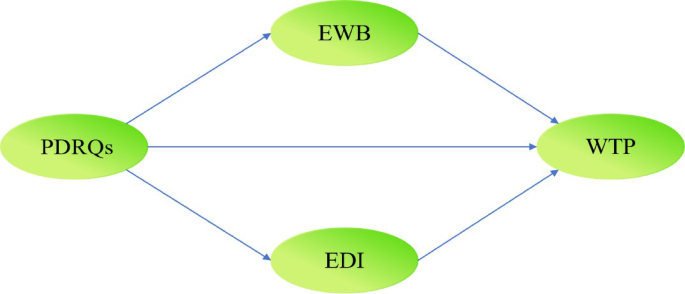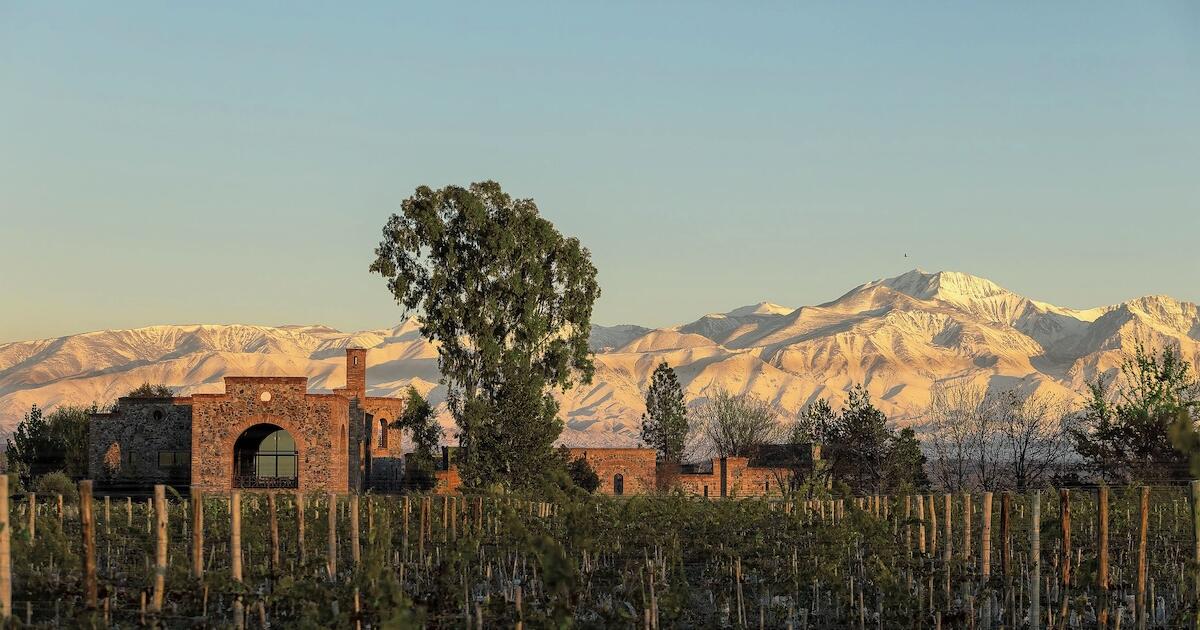The impact of perceived restorative destination environments on tourists’ willingness-To-Pay for environmental protection

Li, J. et al. Benefits, potential and risks of China’s grassland ecosystem conservation and restoration. Sci. Total Environ. 905, 167413 (2023).
Google Scholar
Wong, I. A., Ma, J. & Xiong, X. Touristic experience at a nomadic sporting event: craving cultural connection, sacredness, authenticity, and nostalgia. J. Hosp. Tour Manag. 44, 70–78 (2020).
Google Scholar
Zhang, M. A., Borjigin, E. & Zhang, H. Mongolian nomadic culture and ecological culture: on the ecological reconstruction in the agro-pastoral mosaic zone in Northern China. Ecol. Econ. 62 (1), 19–26 (2007).
Google Scholar
Wang, P., Ya, J. & W., & Tourists’ willingness to pay conservation fees: the case of Hulunbuir grassland, China. J. Resour. Ecol. 14 (3), 656–666 (2023).
Google Scholar
Piriyapada, S. & Wang, E. Modeling willingness to pay for coastal tourism resource protection in Ko Chang marine National park, Thailand. Asia Pac. J. Tour Res. 20 (5), 515–540 (2015).
Dardanonia., V. & Guerriero C.Young people’ s willingness to pay for environmental protection. Ecol. Econ. 177, 106774 (2020).
Yang, J. et al. The impact of tourist cognition on willing to pay for rare species conservation: base on the questionnaire survey in protected areas of the Qinling region in China. Global Ecol. Conserv. 33, 01952 (2022).
Rahmati, D., Mortazavi, S. A., Alamdarlo, H. N. & Vakilpour, M. H. Heterogeneity preferences and willingness to pay for environmental services: evidence from Iran. J. Clean. Prod. 386, 135838 (2023).
Google Scholar
Backman, S. J. et al. Engaging with restorative environments in wellness tourism. Curr. Issues Tour. 26 (5), 789–806 (2023).
Google Scholar
Hug, S. M., Hartig, T., Hansmann, R., Seeland, K. & Hornung, R. Restorative qualities of indoor and outdoor exercise settings as predictors of exercise frequency. Health Place. 15 (4), 971–980 (2009).
Google Scholar
Li, T. T., Liu, F. & Soutar, G. N. Experiences, post-trip destination image, satisfaction and loyalty: A study in an ecotourism context. J. Destin Mark. Manag. 19, 100547 (2021).
Lehto, X. Y. Assessing the perceived restorative qualities of vacation destinations. J. Travel Res. 52 (3), 325–339 (2013).
Google Scholar
Lehto, X., Kirillova, K., Li, H. & Wu, W. A cross-cultural validation of the perceived destination restorative qualities scale: the Chinese perspective. Asia Pac. J. Tour Res. 22 (3), 329–343 (2017).
Google Scholar
Zhang, H., Zhang, X., Yang, Y. & Ma, J. From nature experience to visitors’ pro-environmental behavior: the role of perceived restorativeness and well-being. J. Sustain. Tour, 1–22 (2023).
Cole, D. N. & Hall, T. E. Experiencing the restorative components of wilderness environments: does congestion interfere and does length of exposure matter? Environ. Behav 42 (6), 806–823 (2010).
Chen, Q., Hu, M., He, Y., Lin, I. & Mattila, A. S. Understanding guests’ evaluation of green hotels: the interplay between willingness to sacrifice for the environment and intent vs. quality-based market signals. Int. J. Hosp. Manag. 104, 103229–102022 (2022).
Google Scholar
Vada, S., Filep, S., Moyle, B., Gardiner, S. & Tuguinay, J. Welcome back: repeat visitation and tourist wellbeing. Tour Manag. 98, 104747 (2023).
Google Scholar
Monitor, G. W. E. & Global Wellness Institute URL: звернення: 06.04. 2021)(2018).
Phelps, A. Holiday destination image—the problem of assessment: an example developed in menorca. Tour Manag. 7 (3), 168–180 (1986).
Google Scholar
Luong, T. B. Eco-destination image, environment beliefs, ecotourism attitudes, and ecotourism intention: the moderating role of biospheric values. J. Hosp. Tour Manag. 57, 315–326 (2023).
Google Scholar
Chi, N. T. K. & Pham, H. The moderating role of eco-destination image in the travel motivations and ecotourism intention nexus. J. Tour Futures (2022).
Qiu, H., Wang, G., Ren, L., Zhang, J. & Wang, J. The impact of restorative destination environments on tourists’ well-being and environmentally responsible behavior: A reasonable person model. Tour Manag Perspect. 44, 101028 (2022).
Kaplan, S. & Kaplan, R. Creating a larger role for environmental psychology: the reasonable person model as an integrative framework. J. Environ. Psychol. 29 (3), 329–339 (2009).
Google Scholar
Kaplan, R. & Kaplan, S. Well-being, reasonableness, and the natural environment. Appl. Psychol. Health Well-Being. 3 (3), 304–321 (2011).
Google Scholar
Wang, Y. C., Liu, C. R., Huang, W. S. & Chen, S. P. Destination fascination and destination loyalty: subjective well-being and destination attachment as mediators. J. Travel Res. 59 (3), 496–511 (2020). (2020).
Google Scholar
Phalen, K. B. An invitation for public participation in ecological restoration: the reasonable person model. Ecol. Restor. 27 (2), 178–186 (2009).
Google Scholar
Goh, E., Ritchie, B. & Wang, J. Non-compliance in National parks: an extension of the theory of planned behaviour model with pro – environmental values. Tour Manag. 59, 123–127 (2017).
Google Scholar
Kaplan, R. & Kaplan, S. Humanscape: Environments for People (Duxbury., 1978).
Wang, Y. C., Liu, C., Huang, R. & Chen, S. P. W., S.,& Destination fascination and destination loyalty: subjective Well-Being and destination attachment as mediators. J. Travel Res., 1–16 (2019).
Hair, J. F., Black, W. C. & Babin, B. J. & Anderson. R. E. Multivariate Data Analysis 7th edn (Prentice Hall, 2010).
Uysal, M., Sirgy, M. J., Woo, E. & Kim, H. L. Quality of life (QOL) and well-being research in tourism. Tour Manag. 53, 244–261 (2016).
Google Scholar
Rahmani, K., Gnoth, J. & Mather, D. Hedonic and Eudaimonic well-being: A psycholinguistic view. Tour Manag. 69, 155–166 (2018).
Google Scholar
Zhou, B., Wang, L., Huang, S. S. & Xiong, Q. Impact of perceived environmental restorativeness on tourists’ pro-environmental behavior: examining the mediation of place attachment and the moderation of ecocentrism. J. Hosp. Tour Manag. 56, 398–409 (2023).
Google Scholar
Chew, E. Y. T. & Jahari, S. A. Destination image as a mediator between perceived risks and revisit intention: A case of post-disaster Japan. Tour Manag. 40, 382–393 (2014).
Google Scholar
Herzog, T. R., Maguire, P. & Nebel, M. B. Assessing the restorative components of environments. J. Environ. Psychol. 23 (2), 159–170 (2003).
Google Scholar
Yakınlar, N. & Akpınar, A. How perceived sensory dimensions of urban green spaces are associated with adults’ perceived restoration, stress, and mental health? Urban for. Urban Green. 72, 127572 (2022).
Google Scholar
Hartig, T. & Staats, H. The need for psychological restoration as a determinant of environmental preferences. J. Environ. Psychol. 26 (3), 215–226 (2006).
Google Scholar
Berto, R. Assessing the restorative value of the environment: A study on the elderly in comparison with young adults and adolescents. Int. J. Psychol. 42 (5), 331–341 (2007).
Google Scholar
Ratcliffe, E. & Korpela, K. M. Memory and place attachment as predictors of imagined restorative perceptions of favourite places. J. Environ. Psychol. 48, 120–130 (2016).
Google Scholar
Pasanen, T. P., Neuvonen, M. & Korpela, K. M. The psychology of recent nature visits:(How) are motives and attentional focus related to post-visit restorative experiences, creativity, and emotional well-being? Environ. Behav. 50 (8), 913–944 (2018).
Google Scholar
Wang, X., Qin, X. & Zhou, Y. A comparative study of relative roles and sequences of cognitive and affective attitudes on tourists’ pro-environmental behavioral intention. J. Sustain. Tour. 28 (5), 727–746 (2020).
Google Scholar
Su, L., Hsu, M. K. & Boostrom, R. E. Jr From recreation to responsibility: increasing environmentally responsible behavior in tourism. J. Bus. Res. 109, 557–573 (2020).
Google Scholar
Buzinde, C. N. Theoretical linkages between well-being and tourism: the case of self-determination theory and spiritual tourism. Ann. Tour Res. 83, 102920 (2020).
Google Scholar
Hao, F. & Xiao, H. Residential tourism and Eudaimonic well-being: A ‘value-adding’analysis. Ann. Tour Res. 87, 103150 (2021).
Google Scholar
Su, L., Tang, B. & Nawijn, J. How tourism activity shapes travel experience sharing: tourist well-being and social context. Ann. Tour Res. 91, 103316 (2021).
Google Scholar
Steg, L. & Vlek, C. Encouraging pro-environmental behaviour: an integrative review and research agenda. J. Environ. Psychol. 29 (3), 309–317 (2009).
Google Scholar
Hinds, J. & Sparks, P. Engaging with the natural environment: the role of affective connection and identity. J. Environ. Psychol. 28 (2), 109–120 (2008).
Google Scholar
Qiu, M., Jin, X. & Scott, N. Sensescapes and attention restoration in nature-based tourism: evidence from China and Australia. Tour Manag Perspect. 39, 100855 (2021).
Jiang, J., Xia, Q., Tang, Y., Chen, Y. & Su, X. How does nature heal tourists in the context of COVID-19? The perspective of the emotional mechanism. J. Hosp. Tour Manag. 52, 368–381 (2022).
Google Scholar
Lin, L. P. L. & Hsieh, W. K. Exploring how perceived resilience and restoration affected the wellbeing of Matsu pilgrims during COVID-19. Tour Manag. 90, 104473 (2022).
Google Scholar
Lee, T. H. A structural model for examining how destination image and interpretation services affect future visitation behavior: a case study of Taiwan’s Taomi eco-village. J. Sustain. Tour. 17 (6), 727–745 (2009).
Google Scholar
Chiu, Y. T. H., Lee, W. I. & Chen, T. H. Environmentally responsible behavior in ecotourism: exploring the role of destination image and value perception. Asia Pac. J. Tour Res. 19 (8), 876–889 (2014).
Google Scholar
Khan, M. J., Chelliah, S. & Ahmed, S. Factors influencing destination image and visit intention among young women travellers: role of travel motivation, perceived risks, and travel constraints. Asia Pac. J. Tour Res. 22 (11), 1139–1155 (2017).
Google Scholar
Park, S. H., Hsieh, C. M. & Lee, C. K. Examining Chinese college students’ intention to travel to Japan using the extended theory of planned behavior: testing destination image and the mediating role of travel constraints. J. Travel Tour Mark. 34 (1), 113–131 (2017).
Google Scholar
White, C. J. Destination image: to see or not to see? Int. J. Contemp. Hosp. Manag. 16 (5), 309–314 (2004).
Google Scholar
Hu, X., Huang, S. S., Chen, G. & Hua, F. The effects of perceived destination restorative qualities on tourists’ self-identity: A Tale of two destinations. J. Destin Mark. Manag. 25, 100724 (2022).
Moons, I., De Pelsmacker, P. & Barbarossa, C. Do personality-and self-congruity matter for the willingness to pay more for ecotourism? An empirical study in Flanders. Belgium J. Clean. Prod. 272, 122866 (2020).
Google Scholar
Huang, T. L. Restorative experiences and online tourists’ willingness to pay a price premium in an augmented reality environment. J. Retail Consum. Serv. 58, 102256 (2021).
Google Scholar
Collado, S. & Corraliza, J. A. Children’s restorative experiences and self-reported environmental behaviors. Environ. Behav. 47 (1), 38–56 (2015).
Google Scholar
Chiang, Y. J. Perceived restorativeness on tourists’ environmentally responsible behavior: A case of a rice field landscape. Adv. Hospitality Leisure. 17, 37–54 (2021).
Google Scholar
Dekhili, S. & Hallem, Y. An examination of the relationship between co-creation and well-being: an application in the case of tourism. J. Travel Tour Mark. 37 (1), 33–47 (2020).
Google Scholar
Suess, C. & Mody, M. A. Hotel-like hospital rooms’ impact on patient well-being and willingness to pay: an examination using the theory of supportive design. Int. J. Contemp. Hosp. Manag. 30 (10), 3006–3025 (2018).
Google Scholar
Oliveira, T., Araujo, B. & Tam, C. Why do people share their travel experiences on social media? Tour Manag. 78, 104041 (2020).
Google Scholar
Kaida, N. & Kaida, K. Positive associations of optimism–pessimism orientation with pro-environmental behavior and subjective well-being: a longitudinal study on quality of life and everyday behavior. Qual. Life Res. 28, 3323–3332 (2019).
Google Scholar
Lissner, I. & Mayer, M. .Tourists’ willingness to pay for blue Flag’s new ecolabel for sustainable boating: the case of whale-watching in Iceland. Scand. J. Hosp. Tour. 20 (4), 352–375 (2020).
Google Scholar
Jurado-Rivas, C. & Sanchez-Rivero, M. Willingness to pay for more sustainable tourism destinations in world heritage cities: the case of Caceres. Spain Sustain. 11 (21), 5880 (2019).
Google Scholar
Nelson, K. M., Partelow, S., Stäbler, M., Graci, S. & Fujitani, M. Tourist willingness to pay for local green hotel certification. Plos One. 16 (2), e0245953 (2021).
Google Scholar
Can, A. S., Ekinci, Y. & Dilek-Fidler, S. Do blue flag promotions influence tourists’ willingness to pay a price premium for coastal destinations? Tour Manag. 98, 104767 (2023).
Google Scholar
Pham, H. S. T. & Khanh, C. N. T. Ecotourism intention: the roles of environmental concern, time perspective and destination image. Tour Rev. 76 (5), 1141–1153 (2021).
Google Scholar
Huang, C. C. & Lin, W. R. How does tourist learning affect destination attachment in nature-based tourism: multiple mediations comparison and distal mediation analysis. J. Outdoor Recreat Tour. 43, 100665 (2023).
Google Scholar
Inner Mongolia News Network. (2020). https://inews.nmgnews.com.cn/system/2020/07/13/012943417.shtml
Hulunbuir Statistics Bbureau. Hulunbuir Statistical bulletin on national economic and social development in 2023. (2023). https://tjj.hlbe.gov.cn/News/show/1204678.html(
Hulunbuir Economic and Social Research Institute, Hulunbuir Development Research Center. North. Econ. 02. (2016). http://bfjjchina.cn/uploads/files/20240514/2674ce461d0d0d0270875d2f97003647.pdf
Kuo, N. T., Cheng, Y. S., Chang, K. C. & Hu, S. M. How social capital affects support intention: the mediating role of place identity. J. Hosp. Tour Manag. 46, 40–49 (2021).
Google Scholar
Hair, J. F., Ringle, C. M. & Sarstedt, M. P. L. S. S. E. M. Indeed a silver bullet J. Mark. Theory Pract. 19 (2), 139–152 (2011).
Google Scholar
Hair, J. T., Anderson, R. E., Tatham, R. L. & Black, W. C. Multivariate Data Analysis with Readings (Macmillan, 1998).
Pandey, P. & Pandey, M. M. Research methodology tools and techniques. Bridge Cent (2021).
Scheaffer, R. L., Mendenhall, W. & Ott, R. L. Elementary Survey Sampling, Sixthedpp. 126 (Duxbury, 2006).
Hair, J. F., Risher, J. J., Sarstedt, M. & Ringle, C. M. When to use and how to report the results of PLS-SEM. Eur. Bus. Rev. 31 (1), 2–24 (2019).
Google Scholar
Hair, J. F., Hult, G. T. M., Ringle, C. M. & Sastedt M. A Primer on Partial Least Squares Structural Equation Modeling (PLS-SEM) 2nd edn (Sage, 2017).
Wang, P. W., Ya, J., Zhong, L. S. & Mei, R. Respondent uncertainty and reliability in contingent valuation—A case of the Dalai lake protected area. Limnologica 58, 59–68 (2016).
Google Scholar
Strazzera, E., Scarpa, R., Calia, P., Garrod, G. D. & Willis, K. G. Modelling zero values and protest responses in contingent valuation surveys. Appl. Econ. 35 (2), 133–138 (2003).
Google Scholar
Wang, P. W. & Jia, J. B. Tourists’ willingness to pay for biodiversity conservation and environment protection, Dalai lake protected area: implications for entrance fee and sustainable management. Ocean. Coast Manag. 62, 24–33 (2012).
Google Scholar
Podsakoff, P. M., MacKenzie, S. B., Lee, J. Y. & Podsakoff, N. P. Common method biases in behavioral research: a critical review of the literature and recommended remedies. J. Appl. Psychol. 88 (5), 879 (2003).
Google Scholar
Henseler, J., Ringle, C. M. & Sinkovics, R. R. The use of partial least squares path modeling in international marketing. In new challenges to international marketing. Emerald Group. Publ Lim. 20, 277–319 (2009).
Hulland, J. Use of partial least squares (PLS) in strategic management research: A review of four recent studies. Strateg Manag J. 20 (2), 195–204 (1999).
Google Scholar
Lee, C., Hallak, R. & Sardeshmukh, S. R. Innovation, entrepreneurship, and restaurant performance: A higher-order structural model. Tour Manag. 53, 215–228 (2016).
Google Scholar
Park, S., Lee, J. S. & Nicolau, J. L. Understanding the dynamics of the quality of airline service attributes: satisfiers and dissatisfiers. Tour Manag. 81, 104163 (2020).
Google Scholar
Chin, W. W., Peterson, R. A. & Brown, S. P. Structural equation modeling in marketing: some practical reminders. J. Mark. Theory Pract., 287–298 (2008).
Hair, J. F. Jr, Sarstedt, M., Hopkins, L. & Kuppelwieser, V. G. Partial least squares structural equation modeling (PLS-SEM): an emerging tool in business research. Eur. Bus. Rev. 26 (2), 106–121 (2014).
Google Scholar
Zhao, X., Lynch, J. G. Jr & Chen, Q. Reconsidering Baron and Kenny: Myths and truths about mediation analysis. J. Consum. Res. 37 (2), 197–206 (2010).
Google Scholar
Kazeminia, A., Hultman, M. & Mostaghel, R. Why pay more for sustainable services? The case of ecotourism. J. Bus. Res. 69 (11), 4992–4997 (2016).
Google Scholar
Slovic, P., Finucane, M., Peters, E. & MacGregor, D. G. Rational actors or rational fools: implications of the affect heuristic for behavioral economics. J. Socio-Econ. 31 (4), 329–342 (2002).
Google Scholar
Winter, S. R., Crouse, S., Rice, S. & R., & The development of ‘green’ airports: which factors influence willingness to pay for sustainability and intention to act? A structural and mediation model analysis. Technol. Soc. 65, 101576 (2021).
Google Scholar
Xu, B., Ahmad, S., Charles, V. & Xuan, J. Sustainable commercial aviation: what determines air travellers’ willingness to pay more for sustainable aviation fuel? J. Clean. Prod. 374, 133990 (2022).
Google Scholar
Dong, Y. & Qu, Y. The impact mechanism and boundary conditions of tourists’ restoration perception on destination attachment: A resource conservation perspective. Tour Manag Perspect. 48, 101165 (2023).
Pals, R. et al. Development of the PRCQ: A measure of perceived restorative characteristics of zoo attractions. J. Environ. Psychol. 29 (4), 441–449 (2009).
Google Scholar
link





:max_bytes(150000):strip_icc()/TAL-header-faro-algarve-portugal-CALIOFEUROPE0825-fa978d40a74a406b95586473636292f1.jpg)

